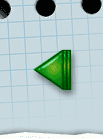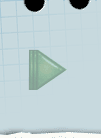The heart and circulation
This unit aims to support the teaching in class of the science
units, 'Life processes and living things', and 'Circulation'. Wherever
possible, the children should have real experiences in this unit,
to ensure a more thorough understanding of the knowledge. This unit
can then be used to consolidate knowledge and test understanding.
It covers this unit. It is not aimed at teaching the unit for you.
Encourage the children to find their pulse. Some find it easier
to locate in the neck, or they may be able to feel their heart beating
in their chest. Stethoscopes can be used in the class, or can be
made out of funnels and plastic tubing. This topic provides a good
opportunity to collect data, with children noting resting rates
and then rates after different forms of exercise. If available,
these results can be put onto a database. There is much scope for
further maths work, with upper Key Sage 2, linked with finding means,
medians, ranges of results, plotting graphs, ordering data etc.
Also you can pose questions to the children; does a high resting
rate mean that you have a high rate after exercise? Is there a link
with height and resting rates? Who has the highest resting rate,
and who has the lowest?
Children can find remembering the movement of the blood around
the body difficult. Acting it out can help. Have a child who is
the lungs. He sits at a table with some small cards. Written on
these cards is the word 'oxygen'. Two children are the heart. Choose
a selection of other children to represent different parts of the
body. A line of remaining pupils are then the blood. They visit
the lungs, collecting an 'oxygen' card. They then go to the heart,
and one of the heart children pushes them out to different parts
of the body. They give their oxygen card to that part of the body.
They then travel back to the heart, and the other heart child pushes
them back to the lungs to collect some more oxygen. Acting it out
in this way helps them appreciate the cyclic pattern that exists
and they are then better able to remember and understand what is
happening and why.
QCA Science Schemes of Work Link:
Keeping Healthy - Unit 5A
Other useful Contacts:
|



















